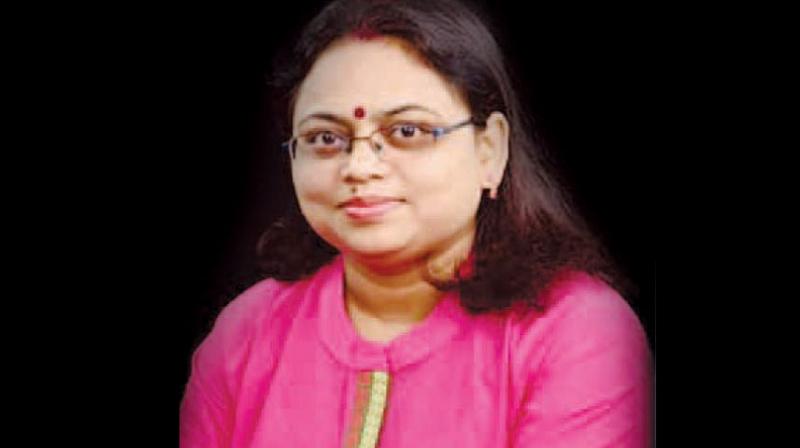Position of Mars influenced India’s Mars Orbiter Mission
Astrologers in the country believe that the position of Mars in the natal chart influences a person’s life, this may be debatable, but the position of the red planet did influence India’s Mars Orbiter Mission (MOM).
This came out in a talk by India’s Rocket Woman Dr Ritu Karidhal, the Deputy Director Operations of the Mars Mission. Dr Karidhal was invited today by the International Centre Goa (ICG) in its 6th ICG 2020s Development Dialogue for an online session. The Rocket Woman was interviewed by ICG Vice President Dattaraj Salgaocar.
Dr Karidhal said that the position of Mars vis-à-vis the Earth was very important to understand in order to calculate when the orbiter should leave geo-synchronisation to reach Mars. Any miscalculation in that would mean that the orbiter would not be able to enter Mars’ orbit.
The ISRO team that worked on the mission under her leadership had only 18 months to work on the project, this being the shortest time for any such mission.
According to the young scientist, the team had to work out several scenarios to ensure that MOM was successful. The orbiter travelled over 600 million kilometres, considering its orbits, though the distance between the Earth and Mars is around 250 million kilometres.
Given the distance, covered by the orbiter, there was a time lag in the communication, which increased as the orbiter went away from the Earth.The time extended to 20 minutes and beyond, which meant that the communication would take 20 minutes to reach from the ISRO station on Earth to the orbiter and another 20 minutes for the communication from the spacecraft to reach ISRO.
“Real-time operations are not possible,” Dr Karidhal told the online audience. In her reply to a question by Salgaocar she said how she was attracted to the moon as a child and wondered how the moon followed her wherever she went. “I would ask my mother, how come the moon follows me,” she said. She added that her family helped her break the stereotypes that women are no cut out for science, by allowing and encouraging her to take up science.
She started her presentation by mentioning how Aryabhatta had said in the 5th century that the Earth is round, that it orbits round the Sun and also invented zero. She then informed the audience that Bhaskaracharya had discovered, in the 12th century, the Earth’s gravitational pull. She also referred to Dr Vikram Sarabhai, the father of India space projects.

Coming to MOM, she said that it was essential for the team to have onboard software with autonomous and automated functions. This meant that the computers onboard would take action in case of problems or at required times for example firing of the rocket.
For the autonomous and automated functions, various scenarios had to be worked out. The multi-tasking of a lady came out subtly in her talk, when she mentioned that since there was very little time on hand, she would carry the work home and after finishing the domestic chores would start working sometimes around midnight and would go on till 4 am.
The autonomous automated functions required fault detection, isolation of systems with faults and reconfiguring them. All this had to be done without disturbing the prime functions of the spacecraft.
The team also worked out methods to save fuel and use maximum solar energy. Solar cells that work on Earth cannot work in deep space, so they had to be redesigned. Also, different antennae had to worked out for different functions and to work from varying distances.
The time of the launch of the spacecraft was to be when Mars was at 46 degrees from Earth, to ensure that the spacecraft enters Mars’ gravity at the right time.
When the final moment came and the spacecraft entered the orbit of Mars, the ISRO team lost contact with the spacecraft. This was because it had gone behind the red planet. It took 26 tense minutes for the team to establish contact with the spacecraft once again.
The MOM was the first Mars mission in the world to succeed in the first attempt. Of the 51 attempts earlier by other countries, only 21 had succeeded, but none in the first attempt.
MOM was the most economical interplanetary mission in the world , costing Rs 450 crore, while missions of other countries were worth over Rs 6,000 crore. It was also a project realised in the shortest span of time, that being 18 months. This was also the first Indian satellite with full-scale onboard autonomy. Another achievement of MOM was that it was the youngest team that worked on it. A humble Dr Karidhal said her team and she were proud of the success of MOM.
